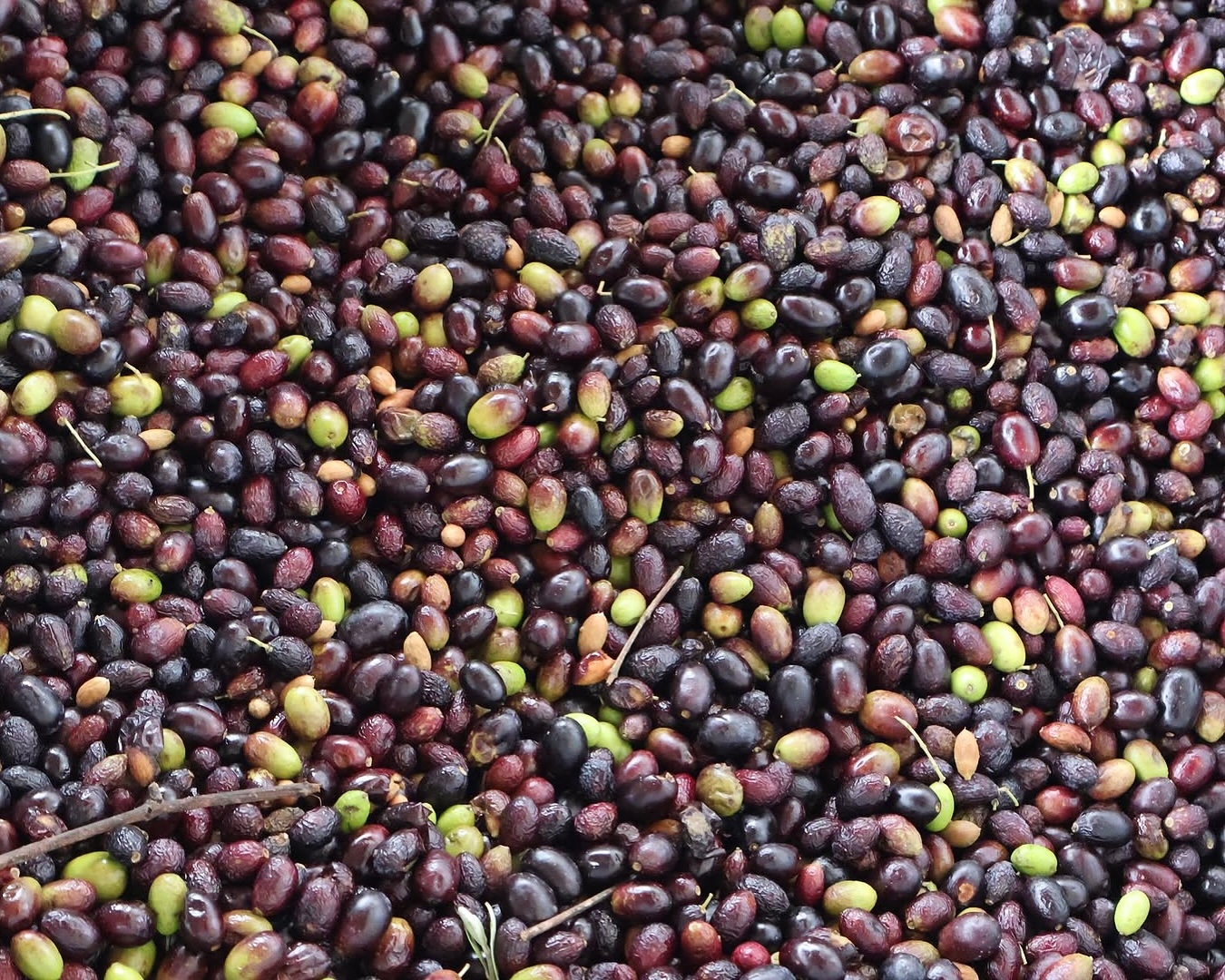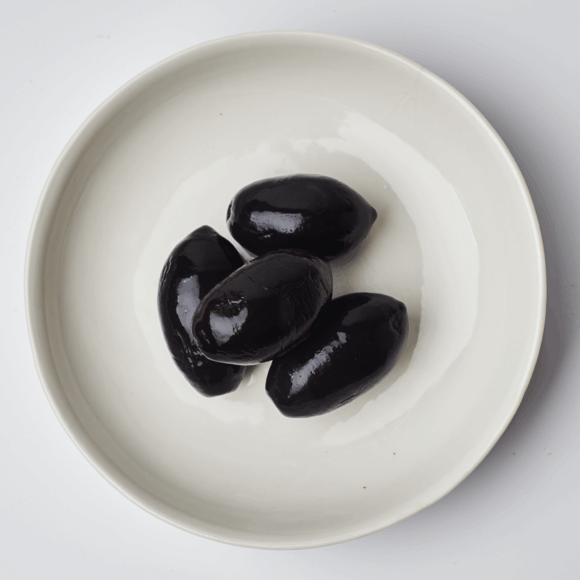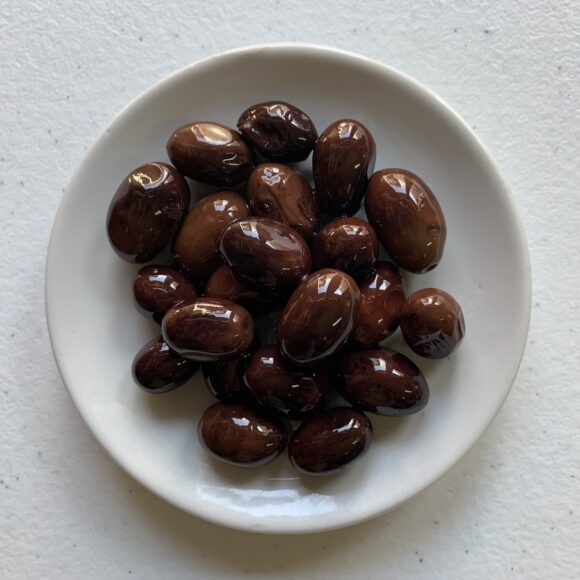Are black olives really black? Short answer: not always. And almost never naturally.
In fact, most black olives on grocery store shelves didn’t start black at all. Industrially produced black olives are often harvested when still green or underripe, and their dark color comes not from ripening but from forced oxidation, dyes, and heavy doses of color stabilizers, particularly ferro gluconato (that’s iron).
So no, most black olives aren’t born that way. They’re MADE that way.
The industrial shortcut
Here’s how it usually goes: olives are picked while still green, then exposed to jets of air in large tanks where oxygen rapidly oxidizes their skins. This turns them from green to black. Then, industrial processors add iron to “lock in” the black color and make it uniform. This process strips the olives of their natural character: bitterness, sweetness, nuance. It also sacrifices texture for appearance. The result? Shiny, black, flavorless olives with an oddly soft bite and zero personality.
Gustiamo’s olives: naturally ripened, minimally treated
At Gustiamo, we don’t like shortcuts. Our farmers harvest their olives when they’re naturally ripe, meaning black or dark purple on the tree. These olives vary in color depending on the tree, the climate, and even the time of day.
Take Fratepietro’s Bella di Cerignola olives, for example. These giants are picked at peak ripeness and undergo a traditional transformation:
Minimal use of iron (just 40–60 mg/kg, vs the legal limit of 150 mg/kg)
No dyes or colorants
Variations in color are normal and embraced
This is black olive production that respects both the fruit and the eater. The soft texture is thanks to natural ripening, not chemical soaking. And that hint of bitterness? That’s the olive being an olive. Because color doesn’t equal quality, flavor does.
Franco Vastola, on his Maida farm in Campania, grows Leccino olives, lets them fully ripen on the tree, then harvests them when they’re “invaiate” aka have a deep purple tinge. Finally, Franco preserves his black olives in real extra virgin olive oil with the pits intact. His method? Nothing but a hint of white wine vinegar, garlic, salt, and chili. No ferro gluconato. No tricks. Just flavor.
These olives are tiny, savory, and packed with umami.
Conclusion: Some olives are black. Some are neon. Only a few are real.
Let’s be honest: as much as they shouldn’t be jet-black, olives shouldn’t glow either.
If you’ve ever seen shiny, bright green Castelvetrano-style olives or fire-engine red Cerignolas, you’re looking at dyes and chemical treatments, not nature. Those fluorescent hues are the result of color correction, debitterness treatments, and heavy stabilizers, all designed to create uniformity and shelf appeal, not flavor.
Real olives, like the ones grown and cured by Franco Vastola and the Fratepietro family, don’t look like plastic. They look like fruit. They vary in color from olive to olive and jar to jar. That’s because they’re ripened on the tree, not manufactured in a tank. That’s a sign of craft, not defect.


